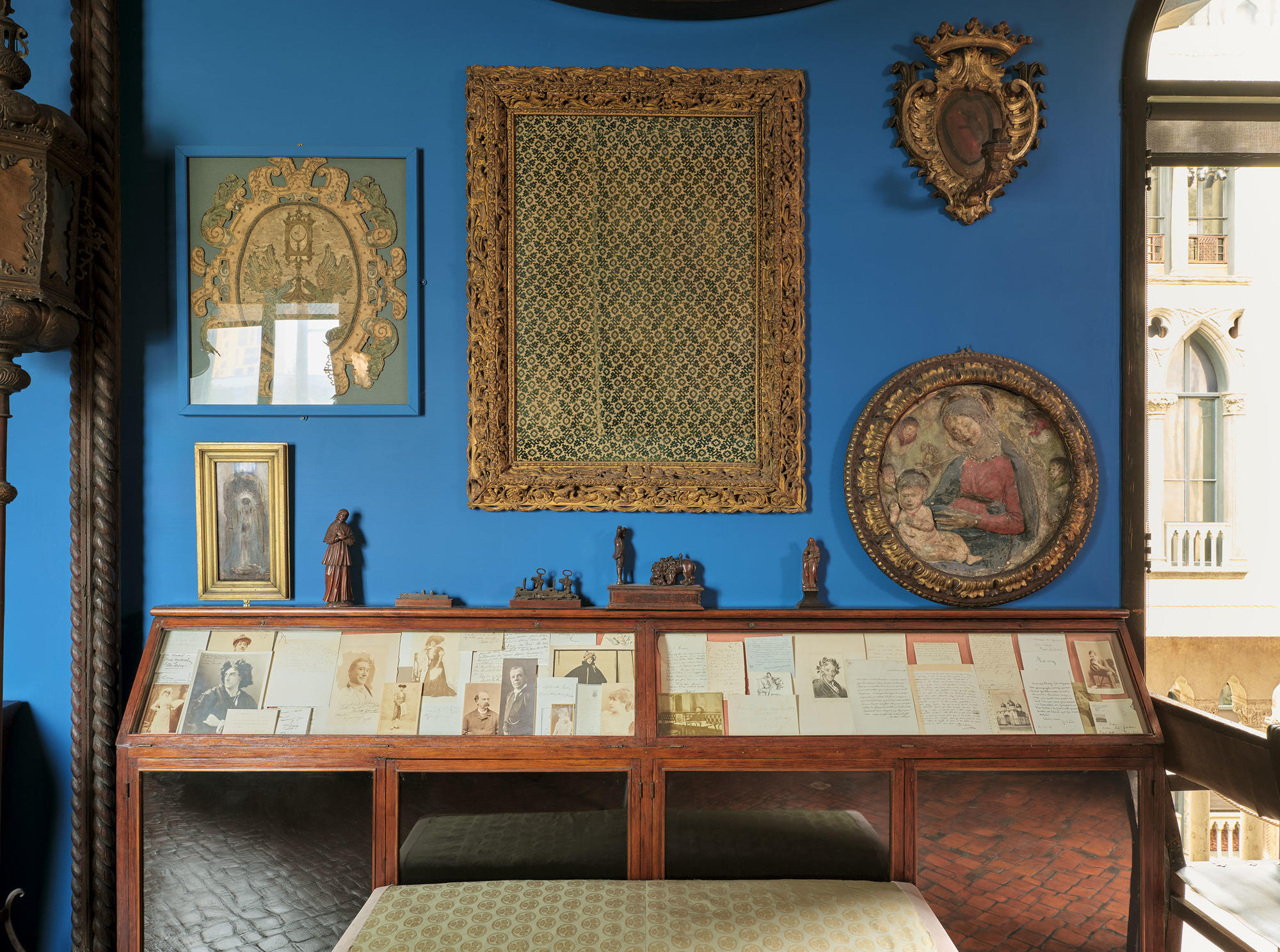In the Long Gallery of the Isabella Stewart Gardner Museum sits the French Authors Case. It holds a host of objects and memorabilia related to historical greats of French literature. Isabella studied French language and literature in her youth, and this case reflects her interest in the topic. The photographs, letters, prints, and autographs were collected from French authors, including one of nineteenth century France’s most prolific writers: Alexandre Dumas.
Who Was Alexandre Dumas?

View of the French Authors Case
Isabella Stewart Gardner Museum, Boston. Photo: Sean Dungan
Alexandre Dumas was born on July 24, 1802 in northern France. His father, Thomas-Alexandre Dumas, was a Haitian soldier and the first person of color to hold the rank of general in the French army. Though Thomas-Alexandre died when Alexandre was young, his father’s military stories likely made a lifelong impression on him. The author stayed in touch with his mixed-race Haitian heritage. Like his father, he used his enslaved grandmother’s last name of Dumas. He even wrote a novel, Georges, about the struggles and adventures of a mixed-race man in Mauritius.

After Achille Devéria (1800-1857), Alexandre Dumas, about 1829. Printed from a lithograph.
Isabella Stewart Gardner Museum, Boston (ARC.006414)
As a young man, Dumas quickly made his mark on the French literary world. In the late 1820s, he started his literary career as a playwright. His first play, performed in 1829, was a successful period piece called Henry III and his Courts. Dumas continued to write dramatic works–many of which received widespread critical acclaim.
The best-known of Dumas’ works are his adventure novels, which he often published serially. Like Dumas’ plays, these were historical fiction. Some were swashbuckling tales of adventure set in the sumptuous Baroque French royal court. Others were revenge stories taking place in Napoleonic Europe. Wildly popular in Dumas’ day, the popularity of these novels has lasted into the present. His stories The Count of Monte Cristo and The Three Musketeers have had numerous editions in multiple languages, along with multiple adaptations and film versions.

Charles Reutlinger (1816-1881, photographer), Alexandre Dumas, père, 1857-1865. Albumen print on card, 10.4 x 6.3 cm (4 ⅛ x 2 ½ in.)
Isabella Stewart Gardner Museum, Boston (ARC.007418)
Dumas was a mainstay in the literary and creative circles of Paris, and became acquainted with many other prominent authors of the time. He was friends with and maintained a correspondence with George Sand, a contemporary female author whose photograph by Nadar is also in the French Authors Case.

Nadar (active Paris, 1820-1910), George Sand, 1864. Albumen print, 16.5 x 11 cm (6 ½ x 4 5/16 in.)
Isabella Stewart Gardner Museum, Boston (P27w82)
Alexandre Dumas’ commercial successes allowed him to live lavishly at times. He even built a castle that he used as a writing retreat and a place to host guests. However, his income could not keep up with his extravagant spending. He was sometimes financially insolvent between his publications.
Like Isabella Stewart Gardner, Dumas had a deep interest in the history of Renaissance and Baroque Europe. These periods appear often in both Dumas’ writings as well as the collection of the Isabella Stewart Gardner Museum. Gardner’s collecting habits reflect her interest in the Dutch Golden Age. For example, in the Dutch Room, the works of prominent artists of the period such as Rubens, Rembrandt, and van Dyck are on display.

View of the Dutch Room, north wall.
Isabella Stewart Gardner Museum, Boston. Photo: Sean Dungan
Isabella’s interest in this historical period also influenced her bookshelves. Her personal library includes a copy of Dumas’ La Tulipe Noire, an adventure novel set during the tulip craze of seventeenth-century Amsterdam.
Alexandre Dumas’ fascinating life and swashbuckling adventures captured the imaginations of many readers during his lifetime. His legacy lives on in the bookshelves and screens of today’s fiction lovers, as well as in the archival cases and bookshelves of the Isabella Stewart Gardner Museum. Isabella’s inclusion of Dumas memorabilia in the French Authors Case displays her great admiration for this author, whose stories still fascinate readers to this day.

Dutch Room
Explore the Museum

The Count of Monte Cristo
Purchase work by Alexandre Dumas

A Mysterious Sitter Prepares For An Overseas Journey
Explore the Collection